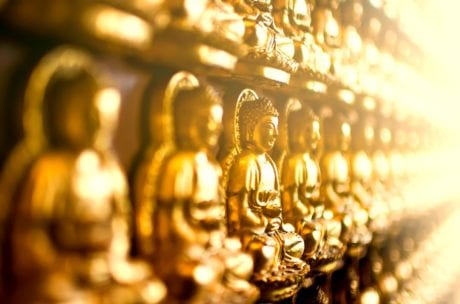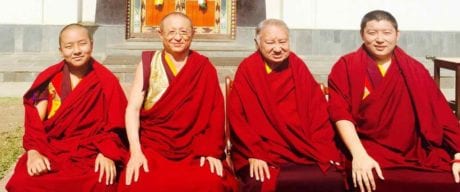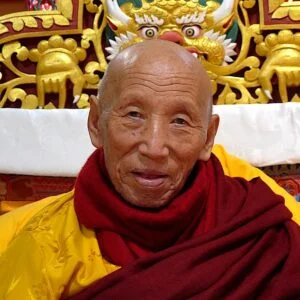Ground, Path, Fruition are standard categories for describing Buddhist practice. But when we hear these terms, what do they mean to us individually? Here, Phakchok Rinpoche pushes us to investigate these commonly used terms and apply them to our own lives.
Ground, Path, Fruition: Not Abstract Concepts
Ground, Path, Fruition end up being vague concepts for us—we may think that the path has to do with meditating. And fruition, of course, means Buddhahood. But what does that mean? Then we may imagine a golden-colored Buddha with a strange protuberance on the head.
And we don’t need to feel bad about this—human beings automatically respond like this. It’s not completely incorrect—but, if we leave things abstract like this, we’re not taking the opportunity to apply the teachings in the most useful way.
Ground, Path, Fruition Applies to Our Practice
Buddhahood, or fruition, is actually very close, and very personal to us. We can realize that if we understand that Dharma means our own mind. Be careful not to view Dharma as some sort of exercise or a homework assignment—it’s really very personal. Why has the Vajrayāna tradition of Tibetan Buddhism continued to this day? Because it is a living tradition—it depends upon lineage and people who relate to it personally. Personal experience becomes realization, and this is shared between master and student.
Each teacher shares his or her own realization with their pupils, and that continues in an unbroken line.
Not Just Book Learning!
And this realization does not come from just reading books or studying hard. Books can support our practice, and we should rely on them, but they only represent a portion of the picture. We might say that books support us 35%, and our teacher gives us another 35% of support.
And the remaining 30% comes from our own side—our own experience engaging in the practice. This is a crucial point!
When we practice meditation, we have experiences, right? And when this happens, we need to recall what our teacher taught. Then, we can combine our experience with the instructions and explanations we received. Then, we open the text and read what the Buddha or great masters explained. If we practice in this way, with these three elements, it’s like putting a jigsaw puzzle together perfectly. This is the best way to follow the path.
But is this how we generally approach our practice? Or do we question things that we don’t like or feel comfortable with—are we trying to tailor the teachings to our own taste and preferences? We should examine carefully and see if that is really a sensible approach. Be honest with yourself as you do this reflection—you know what is going on in your own mind!

- Take a fresh look at your own practice. When experiences occur in your meditation or post-meditation stage, how do these relate to your teacher’s instructions? Do you see a correlation between the two aspects?
- Have you deepened your understanding of texts you have read—are there particular teachings or verses that seem clearer now because of your practice? Are you working with these three elements to create a holistic path?












Responses